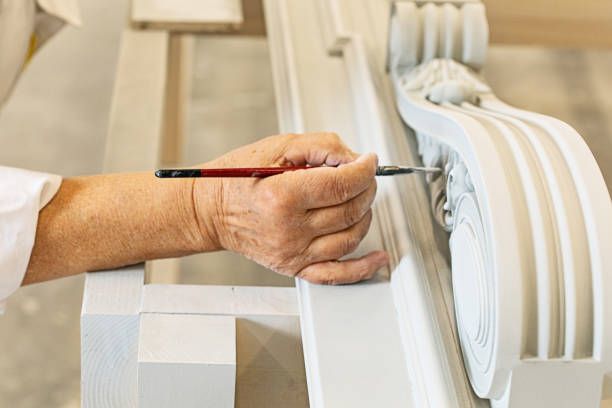When it comes to landscape painting, wood is a versatile and captivating material. Artists endeavor to depict the complex tapestry of nature on canvas, which is enhanced by the textures, colors, and patterns of nature. We’ll dive into how to draw wood texture in landscape painting in this blog post, covering methods, pointers, and the significance of learning this technique to improve your artwork.
Understanding the Anatomy of Wood
It’s essential to grasp the fundamentals of wood anatomy before diving into the creative techniques. The fibers that make up wood run parallel to the grain. The pattern that these fibers create is referred to as the grain itself. The age, species, and environmental factors of the tree also play a role in the distinctive qualities of wood.
Techniques for Capturing Wood Texture
1. Observation and Research:
- Start by examining various wood species in varied environments. Observe the minute differences in textures, colors, and grain patterns.
- Examine the paintings of well-known artists who are skilled at capturing the texture of wood. Examine how well they convey the subtleties of various wood species.
2. Create a Firm Basis First:
- Make a rough sketch of your landscape, indicating the locations that will have a lot of wood elements.
- Determine the fundamental forms of the wood elements while taking into account their dimensions, placement, and perspective in the composition.
3. Discovering Shading Methods:
- To portray the three-dimensional quality of wood, use shading. The direction of light and shadows should be carefully considered, as they are essential in capturing texture.
- Try your hand at cross-hatching, stippling, and other shading methods to add dimension and replicate the organic patterns of wood.
4. Color Layering:
- Wood rarely has one consistent color. You can increase the realism of your illustration by layering various brown, gray, and even faint green hues.
- To create a subtle color scheme that embodies the characteristics of various wood types, mix pencil, charcoal, and even watercolors.
5. Texture Tools:
- Try out different tools to get realistic textures. To create fine lines that resemble the grain of the wood, use a toothpick, tiny brushes, or a fine-tipped pen.
- Use unusual tools to give the wood’s surface interesting textures, such as sponges or tissue paper.
Tips for Drawing Realistic Wood Texture
- Attention to Detail: Be sure to pay close attention to details like the direction of the wood grain, knots, and cracks. Your artwork’s authenticity is greatly enhanced by these subtleties.
- Diverse Texture: Different wood species have unique textures. Try to depict these contrasts in your drawings, whether it’s the rough texture of oak or the smooth surface of birch.
- Examine Natural Lighting: Recognize the effects of natural light on wood in various environments. Having this knowledge will help you to more accurately depict the play of light and shadow.
- Try Different Viewpoints: Wood can be shown from a variety of angles, such as the side view, end grain, or a close-up of the bark. Try a variety of angles to determine how best to highlight the wood in your landscape.
- Combine Creativity and Realism: Even though realism is crucial, don’t be scared to add some artistic flair. Try experimenting with stylized elements or exaggerated textures to add interest to your wood while keeping it true to nature.
Wood Texture Is Important in Landscape Painting
- Communicates Sincerity: Your landscape painting will be more authentic if it has realistic wood texture. By highlighting recognizable details, it fosters a sense of connection between viewers and the natural world.
- Boosts Eye-Catching Appeal: Wood texture gives your composition visual complexity and intrigue. It can act as the scene’s main point, grabbing the attention of the spectator and enhancing the scene’s depth.
- Conveys a Story: Different wood species can communicate different moods or the passage of time. Use wood elements to convey a narrative in your landscape, such as the brittleness of a newly sprouting sapling or the tenacity of an ancient tree.
- Displays Creative Skills: Your ability to create intricate wood textures showcases your artistic talent and meticulousness. It improves the quality of your work and demonstrates a level of craftsmanship that both art critics and enthusiasts find appealing.
Conclusion
In landscape painting, capturing the subtleties of wood texture requires practice, observation, and an acute attention to detail. Artists can give their landscapes vitality by learning about the anatomy of wood, utilizing a variety of techniques, and adding realism tips. Beyond just being aesthetically pleasing, wood texture adds authenticity, improves visual interest, tells a story, and demonstrates the artist’s talent. Allow the beauty of wood to inspire and propel your landscape paintings to new heights as you set out on your artistic journey.

